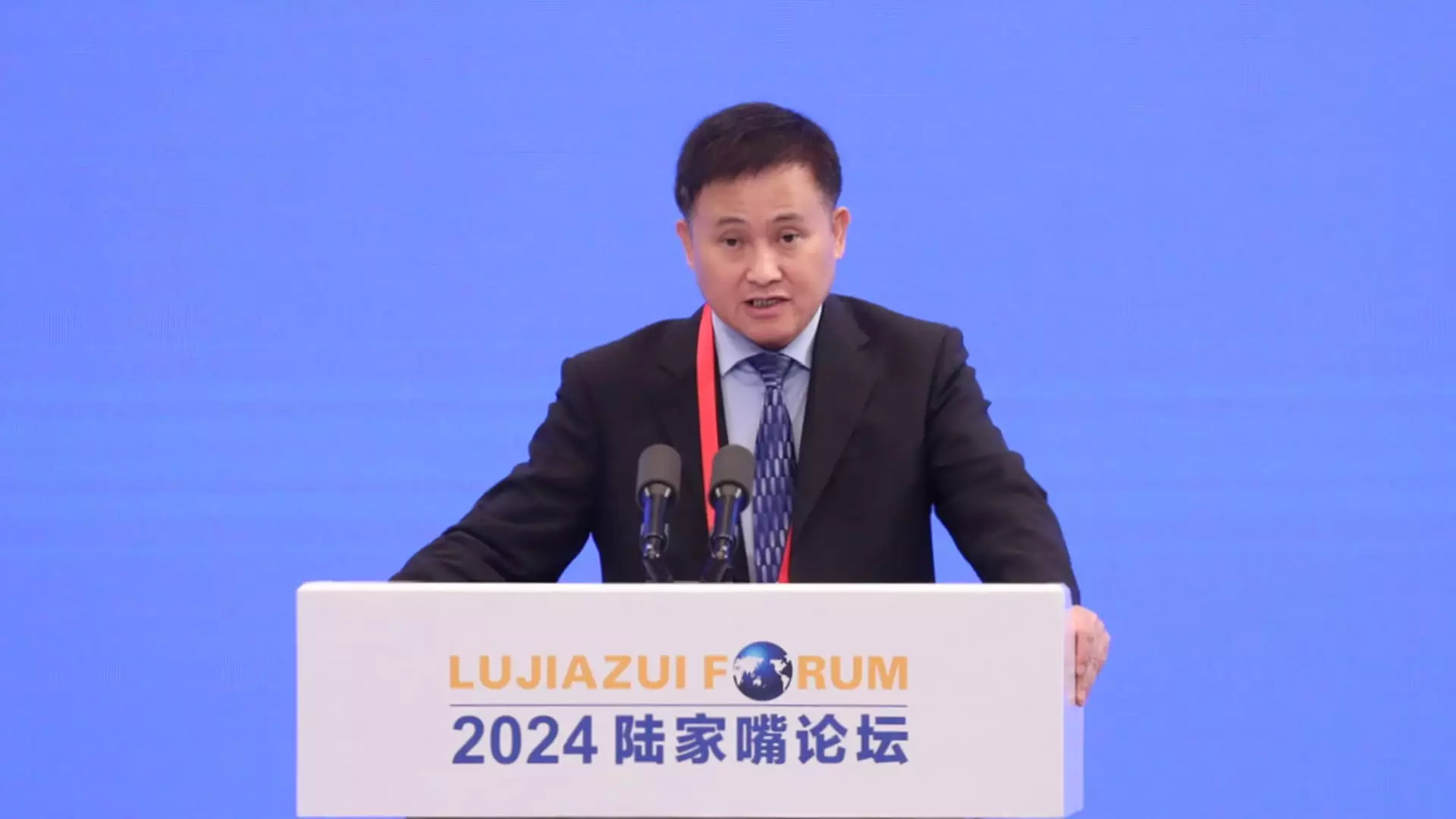China’s economy, long a paragon of robust growth, is currently wrestling with a multitude of challenges that necessitate a recalibration of its monetary policies. In light of prevailing economic conditions, the People’s Bank of China (PBOC) has taken decisive action to support growth and bolster market confidence. One of the most significant measures announced recently is the reduction of the reserve requirement ratio (RRR)—the fraction of deposits that banks must hold in reserve—by 50 basis points. This strategic move signifies a broader intent to stimulate financial activity and address underlying economic vulnerabilities.
The decision to lower the RRR, as stated by PBOC Governor Pan Gongsheng, is expected to inject greater liquidity into the financial system and encourage lending. By providing banks with more capital to lend, this action aims to invigorate both corporate investment and consumer expenditure, ultimately propelling economic growth. However, while the RRR cut is set to ease financial conditions, it remains unclear how swiftly these measures will translate into tangible economic benefits. Pan hinted at an additional potential cut of 0.25 to 0.5 basis points later in the year, though the timeline has yet to be articulated.
Moreover, the PBOC’s plan to lower the 7-day repo rate demonstrates a multifaceted approach to monetary easing. As the repo rate influences the cost of borrowing for banks, decreasing it could further stimulate lending. Interestingly, this decision comes in the backdrop of a significant contraction in China’s 10-year government bond yield, which hit an unprecedented 2% following the initial announcement. Such movements in the bond market often reflect investor sentiment regarding future economic stability and growth prospects.
China’s recent policy adjustments are not occurring in a vacuum. The Federal Reserve’s own decision to cut interest rates has added another layer of complexity to the global financial landscape. The Fed’s easing cycle provides an additional opportunity for China’s central bank to implement more aggressive monetary policies without the fear of substantial capital outflows. This mirrors the delicate balance that PBOC must strike between supporting domestic growth and maintaining financial stability.
Pan’s press conference revealed additional insights into the PBOC’s approach, including potential reductions in the loan prime rate (LPR), a benchmark that influences loan rates for households and businesses. Notably, Pan did not clarify whether the focus would be on the one-year or five-year LPR, which serves differing segments of the market. This facet of communication highlights both the complexity and the careful orchestration needed within China’s financial ecosystem.
Despite these proactive measures, economic analysts underscore the precarious condition of China’s economy. With growth severely hampered by a protracted real estate slump and waning consumer confidence, the pressure on the PBOC to stimulate the economy has never been more palpable. Additionally, calls for fiscal stimulus are resonating among economists, who assert that monetary policy alone may not suffice to rejuvenate economic momentum.
It is crucial to note that China’s governance structure places monetary policy decisions within the purview of higher-level authorities, often leading to a mismatch between immediate financial market needs and strategic economic planning. This hierarchical setting contributes to the overall complexity of crafting effective policy responses in turbulent times.
The recent adjustments to China’s reserve requirement ratio and short-term lending rates indicate a deliberate strategy by the PBOC to foster economic stability amid external pressures and internal challenges. However, the effectiveness of these measures will depend significantly on broader structural reforms aimed at revitalizing consumer confidence and addressing systemic issues in the real estate sector.
In the coming months, all eyes will be on the PBOC as it navigates this multifaceted landscape, balancing the need for immediate economic support against the long-term goals of sustainability and growth. Investors and stakeholders alike await concrete policy actions and outcomes to assess the true impact of these strategic shifts in monetary policy. As the economic narrative unfolds, the PBOC’s agility and insight will be critical in determining China’s economic trajectory in these uncertain times.


Leave a Reply